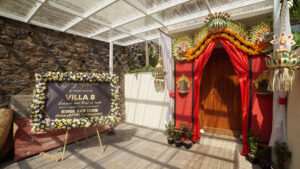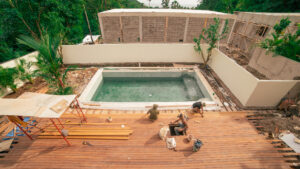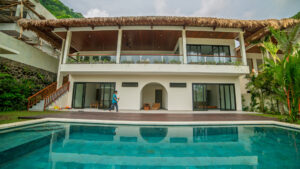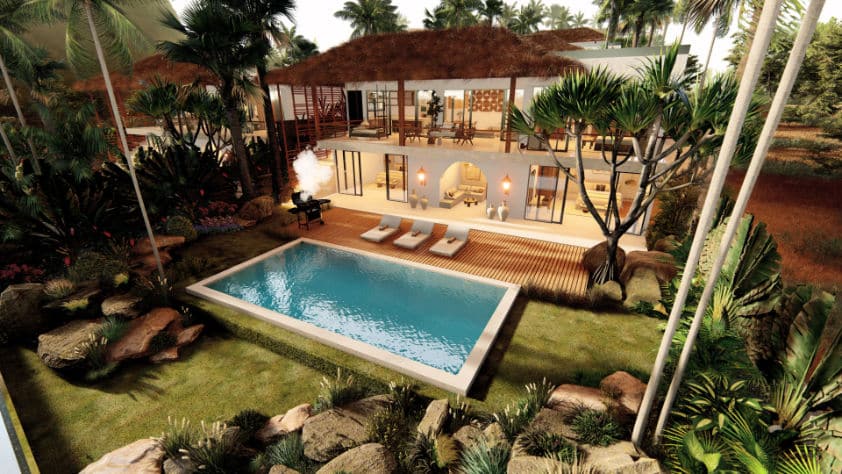Diving in Amed: Learn about the world-class diving in Amed, Bali;
- Dive sites include;
- Amed Wall,
- Jemeluk Bay,
- Japanese Wreck,
- Lipah Bay
- Bunutan
- Discover;
- the marine life
- dive operators
- courses
- best time to dive
- where to stay
Amed is a world-class diving destination
Amed, Bali, is not just another diving destination; it’s a vivid, underwater tapestry that every diver should experience at least once.
With its crystal-clear waters, vibrant coral gardens, and an array of dive sites boasting everything from rare macro critters to intriguing shipwrecks, Amed is a haven for divers of all levels.
It is a place where the ocean’s wonders are accessible, the dive operators are top-notch, and the diving is simply world-class.
Here, I’ll take you through everything you need to know about diving in Amed – from its breathtaking sites and diverse marine life to the best times to dive and where to stay.
Buckle up; we’re about to dive deep into the heart of Amed’s underwater paradise.
Diving in Amed - What you need to know
Before you strap on your fins and mask, there are a few things every diver venturing into Amed’s waters should know.
Amed is renowned for its diverse dive sites, each offering a unique underwater experience. Whether you’re a novice diver or a seasoned pro, Amed’s waters cater to all.
The professionalism of local dive operators ensures everyone, regardless of their diving expertise, can explore Amed’s underwater realm safely and enjoyably.
Insider Tip:
Always check the current and visibility reports from local dive shops before planning your dive.
Conditions can vary, and the locals know best.

Best diving sites in Amed
Amed isn’t just a dive destination; it’s a mosaic of underwater landscapes, each site with its own story and spectacle. Let me take you through some of Amed’s most iconic dive sites, which I’ve explored firsthand.
Amed Wall
The Amed Wall, plunging into the deep with its vibrant corals and bustling marine life, offers an exhilarating experience.
Drifting along this wall, I’ve encountered turtles, reef sharks, and a kaleidoscope of tropical fish.
It’s a dive that combines the thrill of depth with the beauty of life thriving on the wall.
Jemeluk Bay
Jemeluk Bay, with its serene waters and sandy bottom, is perfect for beginners and underwater photographers.
The bay’s calm conditions allow for clear, close encounters with macro critters and the famed underwater temple garden.
It’s where the ocean’s minutiae come to life, revealing the ecosystem’s intricate beauty.
Japanese Wreck
The Japanese Wreck, resting in shallow water, is accessible to snorkelers and divers alike.
It’s a site that combines history with marine biodiversity. Coral and marine life have claimed this wreck as their home, creating a living museum.
Each dive here feels like stepping into a time capsule, surrounded by the vibrant life that has blossomed from the wreck’s remains.
Lipah Bay
This site is particularly famed for its night dives, where the ocean’s nocturnal creatures emerge, turning the dive into an otherworldly experience.
Bunutan
Bunutan, with its strong currents, is a site for the adventurous. It’s a drift dive that sweeps you through a vibrant underwater landscape teeming with large schools of fish and the occasional pelagic.
It’s exhilarating and showcases the dynamic nature of Amed’s underwater world.

Personal Experience: Exploring the Japanese Wreck
During my trip to Amed, I had the opportunity to explore the famous Japanese Wreck. As I descended into the crystal-clear waters, the eerie yet captivating sight of the sunken ship came into view.
The hull of the World War II Japanese ship was adorned with colorful corals and teeming with marine life.
It was a surreal experience to swim through the corridors and compartments of the wreck, feeling like a part of history while being surrounded by schools of vibrant fish.
The visibility around the wreck was exceptional, allowing me to fully appreciate the magnitude of this underwater relic.
This dive site is not only a must-see for history enthusiasts but also a captivating exploration for avid divers.
The blend of history and marine life at the Japanese Wreck makes it a truly unforgettable diving experience in Amed.
The marine life in Amed’s world-class diving waters
Amed’s waters are a biodiversity hotspot. From the tiniest nudibranch to majestic manta rays, the variety of marine life is astounding.
During my dives, I’ve been lucky enough to spot rare macro critters, colorful coral gardens, and even the elusive Mola Mola during the right season.
The health of the coral reefs here is a testament to the conservation efforts of local communities and dive operators.
Insider Tip:
For macro photography enthusiasts, hiring a local dive guide who knows where to find the rare critters can make all the difference.
Dive operators in Amed
Choosing the right dive operator is crucial for a memorable diving experience in Amed.
The local dive shops and operators are not just service providers; they’re stewards of the ocean.
Their dedication to safety and conservation makes diving in Amed not just an adventure, but a contribution to the wellbeing of its marine ecosystems.
Learn to dive with a dive course in Amed
Whether you’re looking to take your first breath underwater or aiming to advance your diving skills, Amed has a plethora of dive courses available.
From PADI-certified beginner courses to advanced and specialty courses, the dive schools in Amed offer comprehensive training by experienced instructors.
My own journey to becoming an Advanced Open Water Diver in Amed was not only educational but deeply transformative.
Best time of year to dive in Amed
Amed’s diving season spans the year, thanks to Bali’s warm, tropical climate. However, the best conditions are typically from April to November, when visibility is at its peak, and the water is calmest.
It’s also when the chance of encountering manta rays and the Mola Mola is highest.
Keep in mind, though, that this is also peak tourist season, so planning ahead is advisable.
Where to stay on a diving trip in Amed
From luxurious resorts to cozy dive hostels, Amed offers a range of accommodations to suit every taste and budget.
Many of these places are run by divers for divers, offering not just a place to rest but a community to engage with.
Staying at a dive resort in Amed allowed me to immerse fully in the diving culture, sharing stories and tips with fellow underwater enthusiasts.
How to get to Amed
Amed is located on the northeast coast of Bali and is accessible by road from Bali’s Ngurah Rai International Airport.
The journey takes approximately 2.5 to 3 hours, offering scenic views of Bali’s countryside. Many dive resorts offer airport transfers, making the journey hassle-free.
Insider Tip:
Renting a scooter in Amed is an excellent way to explore the area’s terrestrial beauty at your own pace.

Closing thoughts on diving in Amed
Diving in Amed is more than just exploring the underwater world; it’s about connecting with a community that cherishes and protects the ocean. Each dive site, with its unique landscapes and inhabitants, tells a part of the larger story of Amed’s underwater realm.
Whether you’re marveling at the macro critters in Jemeluk Bay or drifting along the Amed Wall, you’re part of a world-class diving experience that’s as enriching as it is exhilarating.
Amed is not just a destination on the map; it’s a journey into the heart of the ocean’s wonders. And for those looking to go diving in Amed, it promises adventures and memories that last a lifetime.






